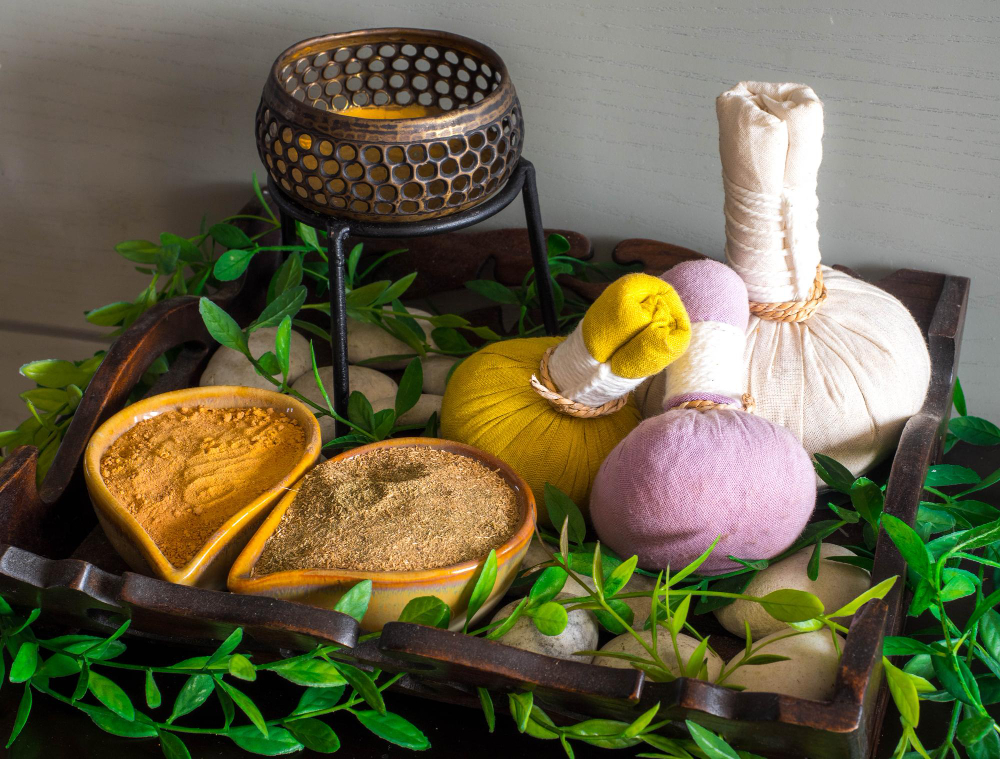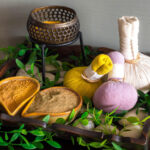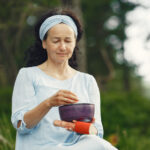In Ayurveda, Rasayana Chikitsa — the rejuvenation therapy — is considered one of the most powerful approaches to preserve health, restore balance, and enhance life quality. The term itself carries deep meaning: Rasa refers to the body’s primary nourishing fluid (plasma), and Ayana means “path” or “entrance.” Together, Rasayana signifies that which nourishes and enriches the Rasa Dhatu, strengthening the body at a fundamental level.
A Rasayana can take many forms — a healing herb, a specific dietary choice, or even the way one lives, speaks, and moves through life. When practiced correctly, Rasayana therapy revitalizes the body, nurtures the mind, and elevates the spirit.
Benefits of Rasayana Therapy
Rasayana practices are known to:
- Support longevity and slow the aging process
- Maintain youthful energy and appearance
- Sharpen memory and mental clarity
- Strengthen cellular function and tissue coordination
- Promote radiant complexion and natural glow
- Cultivate a melodious voice and vibrant vitality
- Enhance sensory perception
- Boost strength, courage, and self-confidence
- Balance the subtle energies (Prana, Tejas, and Ojas)
Who Can Benefit from Rasayana Therapy?
- For the healthy: To maintain optimal health and prevent imbalances.
- For those recovering from illness: To rebuild strength, restore tissues, and aid long-term healing.
When to Begin Rasayana Therapy
In Ayurveda, rejuvenation is most effective after a cleansing process. Performing Panchakarma or other detoxifying therapies before Rasayana ensures the body is free from accumulated toxins, allowing the rejuvenating substances and practices to penetrate more deeply. Even after Shamana Chikitsa (palliative care), Rasayana can be introduced to restore balance between body, mind, and consciousness.
Types of Rasayana Therapy
1. Ahara Rasayana – Rejuvenation Through Diet
Tailored foods nourish specific dosha types:
- Vata: Soaked almonds and cashews
- Pitta: Rose petal jam, rice pudding with cardamom
- Kapha: Plums, peaches, and dark grapes
2. Vihara Rasayana – Lifestyle-Based Rejuvenation
Daily routines and physical habits to restore balance:
- Vata: Oil massage to scalp and feet at night; warm baths with ginger and baking soda
- Pitta: Sandalwood paste on forehead; cool water baths
- Kapha: Deep muscle massage with mustard oil; vigorous yoga or dynamic exercise; application of Vacha powder before a hot shower; avoiding daytime sleep; later bedtime
3. Achara Rasayana – Behavioral Rejuvenation
Positive mental and emotional habits:
- Vata: Maintain supportive relationships; reduce travel; avoid anxiety-inducing situations
- Pitta: Avoid excessive control or judgment; practice forgiveness; release perfectionism
- Kapha: Avoid possessiveness; stay away from depressive environments; embrace creativity and flexibility
4. Aushadha Rasayana – Herbal Rejuvenation
Targeted herbs to restore balance:
- Vata: Haritaki, Ashwagandha, Guggulu
- Pitta: Amalaki, Shatavari, Guduchi
- Kapha: Bibhitaki, Punarnava, Pippali
Why Detox Before Rejuvenation?
Ayurveda emphasizes that a week or more of detoxification prepares the body for Rasayana. Removing toxins first ensures that rejuvenating foods, herbs, and practices work at their fullest potential, leading to a healthy glow, heightened awareness, and a deep sense of vitality.
In essence, Rasayana Chikitsa is not simply a therapy — it is a philosophy of living well. When practiced with proper preparation, it offers the opportunity to experience life with strength, clarity, and joy at every stage.






